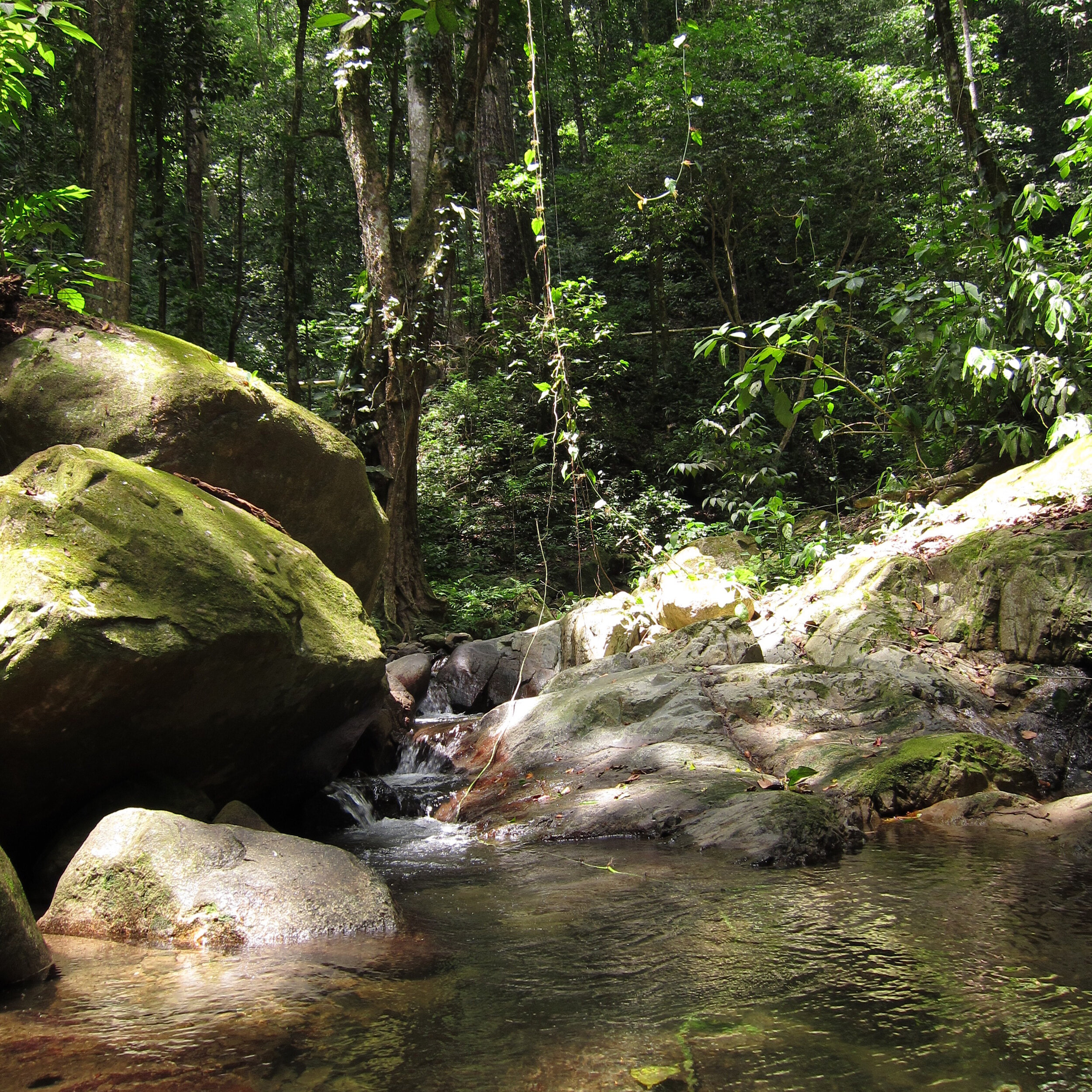
Our impact
Changing lives and protecting forests
People and the environment are not two separate entities, but one interdependent whole. GreenWood believes that the best way to protect a forest is to enlist the participation and support of the people who live there—the folks who stand to gain the most by its sustainable management or lose the most by its destruction. The good news is that the people who make their homes in isolated forest communities can contribute to their defense, but only if they can connect their own livelihood to the survival of those forests. That’s where GreenWood focuses its attention.

Water being delivered from the forest in Copén, Honduras, to power a hydroelectric generator in the community, creating light in the village for the first time.
How we do it
Train artisans
GreenWood has trained hundreds of artisans, sawyers and landowners in more than fifteen remote forest communities on the North Coast of Honduras and the central Amazon of Peru. Far too much so-called “development” involves the installation of “first-world” workshops in “third-world” environments. This infrastructure is expensive and relies on access to kiln-dried wood, reliable sources of electricity, parts and expertise—all of which is often unavailable. GreenWood focuses on tools and technologies that are accessible and appropriate to all local resources.
Serve communities
GreenWood artisans have produced a diversified range of quality furniture and mahogany guitar wood, as well as lumber, boats, wooden pens, carved bowls and, most recently, turned carving mallets. All of these products provide vital income to families who would otherwise rely almost entirely on subsistence agriculture. What’s more, many of these products can be built at home. It’s an occupation that’s easily integrated with traditional family life and agricultural practices, while encouraging the participation of all genders and ages.
Sell products
We provide the tools and resources that empower the most enterprising individuals in these communities to take control of their own forest assets, harvest them sustainably and preserve them for future generations. Several of our community partners have used water sources that originate in their protected forests—along with the income derived from their GreenWood enterprise—to generate hydroelectric power for their homes. That’s “trickle-down” sustainable development!
Manage forests
Responsible forest management is at the core of GreenWood’s productive enterprise. Only when the people who live in and around forested areas share a tangible stake in the health of those forests will they become actively engaged in their protection. Working with experienced local partners, we provide supervision and instruction from qualified forestry professionals, who help develop forest inventories and management plans. These provide a foundation for the legal and sustainable wood used in all our artisan products.
GreenWood cultivates high-end markets for the most valuable woods. But the productive use of lesser-known species is an integral part of sustainable forest management. There are hundreds of tree species in tropical America, but only a handful that enjoy active demand in the marketplace. Our artisans have expanded their palette to include about a dozen secondary tree species, bark and vines in their creation of high-value, low-volume products.

Measuring our impact
Few aspects of development present a bigger challenge—or engender more controversy—than the question of how best to measure one’s impact. Sometimes the most important indicators of progress are the stories that consistently elude pie charts and spreadsheets. Here are a few examples, plumbed from GreenWood’s 27-plus years in Latin America.
Innovations in Community Forestry
GreenWood was invited to Honduras in 1993 to support some of the pioneering efforts to independently certify portions of the country’s hardwood forest. At the time, the international forest certification movement was in its infancy and, unfortunately, many of these early efforts proved difficult to sustain. But in the last two decades, we have developed our own innovative social-forest management approach, focusing on a combination of primary (old-growth) and secondary forests.
There are few models for the management of secondary forests in Latin America. They are typically ignored or devalued in the rush to exploit the rapidly diminishing primary forests. GreenWood’s approach is community based and highly participatory. What’s more, our agroforestry orientation recognizes the logic—and the need—to blend food, firewood and artisan production in poor communities. In El Carbón, Olancho, where we began training chairmakers, we developed a secondary-forest management plan for the production of local crops, firewood, medicinal plants and a variety of craft enterprises. This was approved in 2002 by the governing forestry authority of Honduras, representing the first officially sanctioned management plan for secondary forests in the country. It’s our goal to increase the production and income from these forests to strengthen the linkages between all of these resources and benefits.
Seedlings grow roots
Development comes with no guarantees. Seeds planted in spring carry the hope of good things that might come by fall. Likewise, the investments GreenWood makes don't often bear fruit in real time. So it was particularly gratifying when we paid a visit in 2018 to Santa María del Carbón, the indigenous Pech community in Olancho, Honduras, where GreenWood launched its very first chairmaking workshops more than 20 years ago.
When we visited the school where Curtis Buchanan and Brian Boggs first introduced ladderback and Windsor chairmaking in 1993, we were treated to a heartwarming array of handsome chairs (shown at right), which were designed and built by a crop of young men we'd never met. Not only had GreenWood not led a workshop in the village in about a decade—most of these artisans were not even born when our first sessions took place.
In the photo at left, Curtis Buchanan assembles a Windsor chair during one of the last workshops he conducted in Honduras. The quality and diversity of the work these young men are doing today speaks for itself, as do the pride and personality of the artisans and the preferences of their local market.
The truth is, Curtis and Brian were planting seeds and cultivating roots we could only dream about at the time.
For further background on our early chair workshops in El Carbón, check out this video excerpt from “The Nature of Things with David Suzuki,” which aired in 1998 on CBC television in Canada.





